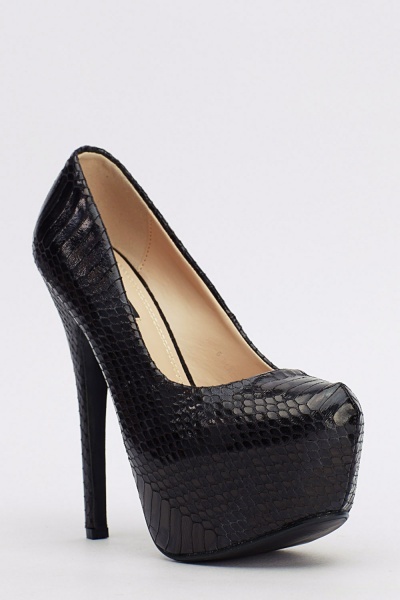
^ (shoes that have been ordered to cast in layers of latex) ^ – made to look like pleaser heels due to the height of the platform.
Clear shoes – also known as ‘stripper stilettos’ are heeled shoes made from a transparent material. They often contain novelties such as liquids, flashing lights and even live fish. They’re often made with PVC, lucite and acrylic resin.
Provocative and often associated with erotic performers an pornography. They often exaggerate sexual image (depending on how and what they are worn with) and are worn with the intention of arousing others.
‘Fuck me shoes’

Boot fetishism is a sexual fetish focused on boots. Boots have become the object of sexual attraction amounting to fetishism for some people and they have become a standard accessory in BDSM scenes (where leather, latex and PVC boots are favoured) and a fashion accessory in music videos. Boots are seen as perhaps the most fetishistic of all footwear and boots may be the most popular fetish clothing attire
Boot fetishism may be accompanied by a fetish for the material from which it is made, such as leather, rubber, or latex.



